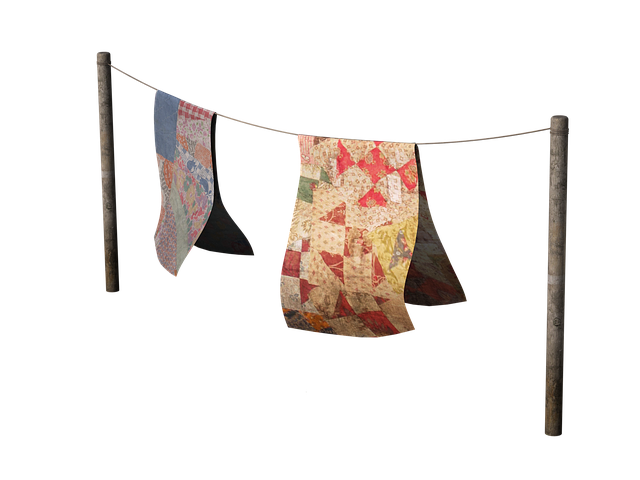Carpet shampooing is essential for maintaining carpet health, aesthetics, and indoor air quality. It involves selecting type-specific shampoos, using suitable equipment, and adopting a systematic approach. Regular cleaning extends carpet lifespan while promoting cleaner environments. Choosing the right shampoo depends on fiber type, carpet age, soil level, and environmental factors. Different types include powdered, liquid, and eco-friendly options. Proper preparation, tools, and attention to detail are crucial for optimal results. Regular shampooing enhances indoor air quality, prolongs carpet lifespan, and preserves aesthetics by removing allergens and improving circulation. DIYers should avoid incorrect shampoos, over-saturating fabrics, and harsh chemicals. Post-shampooing maintenance includes allowing carpets to air dry, vacuuming, addressing stains promptly, and adopting eco-friendly practices to reduce environmental impacts.
“Discover the art and science of high-quality carpet shampooing—a vital aspect of maintaining your home’s interior. This comprehensive guide explores everything from understanding the basics of carpet cleaning to choosing the right shampoo for your needs. Learn about various types, from traditional formulas to eco-friendly options, and master the step-by-step process for optimal results.
Get ready to unlock the secrets to fresh, clean carpets while minimizing environmental impact.”
Understanding Carpet Shampooing: The Basics

Carpet shampooing is a vital process in maintaining the health and appearance of your carpets. It involves deep cleaning to remove dirt, dust, allergens, and stains that accumulate over time. Unlike regular vacuuming, which merely lifts surface debris, carpet shampooing penetrates deeper to address embedded grime.
The basics of carpet shampooing include selecting an appropriate shampoo formulated for different carpet types, using the right equipment like a carpet cleaning machine or manual tools, and following a systematic approach to ensure even coverage and thorough rinsing. Regular carpet shampooing not only extends the lifespan of your carpets but also contributes to a cleaner and healthier indoor environment.
Factors to Consider When Choosing a Carpet Shampoo

When it comes to carpet shampooing, several factors should guide your choice of products. First and foremost, consider the type of fibers in your carpet. Different carpets, whether made of nylon, wool, or polypropylene, require specific care to maintain their integrity and color. Some shampoos might be suitable for one type but damaging to another. Therefore, always check the fiber compatibility before application.
Another critical aspect is the overall condition of your carpet. Old, heavily soiled carpets will need a stronger shampoo to effectively remove deep-seated dirt and stains. Conversely, newer carpets might require a milder formula to avoid excessive wear and tear. Additionally, environmental factors like humidity levels and traffic intensity can impact the choice of shampoo, ensuring it’s tailored to your unique carpeting needs.
Types of Carpet Shampoo: An Overview

Carpet shampooing is a vital part of maintaining a clean and healthy indoor environment. When it comes to carpet cleaning solutions, there are several types of carpet shampoo available in the market, each with its unique benefits and applications. These shampoos can be broadly categorized based on their composition and working mechanisms.
One common type is powdered carpet shampoo, which is highly effective for deep cleaning. It’s mixed with water to create a frothy solution that helps lift dirt and stains from the carpet fibers. Liquid carpet shampoo is another popular option, often preferred for its convenience and ease of application. This form usually contains detergents and enzymes designed to break down dirt and odors. Additionally, there are eco-friendly or natural carpet shampoos gaining popularity, formulated with biodegradable ingredients to minimize environmental impact while still offering powerful cleaning performance.
Step-by-Step Guide to High-Quality Carpet Shampooing

Shampooing carpets properly is an art that requires attention to detail and the right tools for optimal results. Here’s a straightforward guide for achieving high-quality carpet shampooing:
1. Preparation: Begin by moving all furniture away from the carpeted area to ensure full access. Then, vacuum the carpet thoroughly to remove any loose dirt or debris. This initial step is crucial as it prevents particles from being pushed deeper into the fibers during cleaning.
2. Choose the Right Shampoo and Equipment: Opt for a high-quality carpet shampooer suitable for your carpet type. Professional-grade equipment offers better control and efficiency. Pair it with a suitable carpet shampoo that’s safe for your specific carpet material. Always follow the manufacturer’s instructions regarding water temperature and shampoo application.
3. Test on a Small Area First: Before applying shampoo to the entire carpet, conduct a spot test on a less visible area. This step is vital to ensure the shampoo doesn’t cause any discoloration or damage. If no issues appear, you’re clear to proceed.
4. Shampoo Application: Fill your shampooer with the chosen solution and apply it evenly across the carpet using the machine’s spray nozzle. Work in small sections, overlapping each pass slightly for even coverage. Make sure to distribute the shampoo thoroughly, paying attention to corners and edges where dirt tends to accumulate.
5. Agitate and Rinse: Allow the shampoo to dwell for a few minutes, following the product instructions. Then, use a carpet cleaning machine or a hose attachment to rinse the carpet thoroughly. Ensure you remove all residual shampoo to prevent it from drying and becoming sticky.
Benefits of Regular Carpet Cleaning

Regular carpet cleaning offers a multitude of benefits that extend far beyond simply making your space look and smell fresh. Efficient carpet shampooing helps to remove not just visible dirt and debris but also deeper particles like pollen, dust mites, and pet dander – all of which can trigger allergies and respiratory issues. By keeping these allergens at bay, regular carpet cleaning promotes a healthier living environment for you and your family.
Moreover, proper carpet shampooing enhances the lifespan of your carpets by preventing wear and tear caused by embedded dirt and oils. It also helps to restore the original vibrancy of colors and textures, adding value to your home or business. Regular maintenance not only contributes to aesthetics but also ensures optimal performance of heating and cooling systems, as clean carpets allow for better air circulation throughout the space.
Common Carpet Shampooing Mistakes to Avoid

Many homeowners attempt carpet shampooing on their own, but common mistakes can lead to damaged fabrics and an ineffective cleaning process. One of the biggest blunders is using the wrong type of shampoo for your carpet’s material. Different carpets require specialized care; for instance, wool carpets need a gentle touch with specific shampoos designed for natural fibers. Applying too much moisture is another frequent error, which can cause the carpet to become waterlogged and potentially foster mold growth.
Over-shampooing or using harsh chemicals can also be detrimental, leading to color fading and a less-than-fresh scent. It’s crucial to avoid these pitfalls by understanding your carpet’s composition and choosing the right cleaning agents. Proper ventilation during the cleaning process is often overlooked but is vital to prevent musty odors from developing. Effective carpet shampooing involves a delicate balance of cleaning power, material suitability, and moisture control.
Tips for Effective Post-Shampooing Maintenance

After shampooing your carpet, proper maintenance is key to preserving its quality and extending its lifespan. One crucial step is to allow the carpet to air dry completely before walking on it. This prevents any moisture from seeping into the padding, which could lead to mold or mildew growth over time. Ensure good ventilation during and after cleaning to expedite the drying process.
Regular spot treatment and routine vacuuming are also essential post-shampooing practices. Address any immediate stain concerns using suitable carpet cleaners for specific types of stains. Vacuuming helps remove excess moisture, dirt, and shampoo residue, keeping your carpet clean and ensuring a longer life span. This simple yet effective maintenance routine will contribute to the overall health and beauty of your carpets.
The Environmental Impact of Carpet Shampooing

Carpet shampooing, while essential for maintaining a clean and healthy living environment, has an environmental impact that cannot be overlooked. The traditional carpet cleaning methods often involve harsh chemicals and large amounts of water, which can lead to significant ecological consequences. These chemicals can contaminate local water sources if not disposed of properly, contributing to water pollution. Moreover, the high-pressure machines used in these processes can deplete natural resources by consuming large quantities of energy, further exacerbating environmental damage.
To mitigate these issues, it’s crucial to opt for eco-friendly carpet shampooing techniques. Using environmentally conscious products that are biodegradable and non-toxic not only reduces water and energy consumption but also minimizes the release of harmful substances into the atmosphere. Additionally, adopting steam cleaning methods or natural, plant-based solutions can significantly lower the carbon footprint associated with carpet care, fostering a more sustainable lifestyle.
